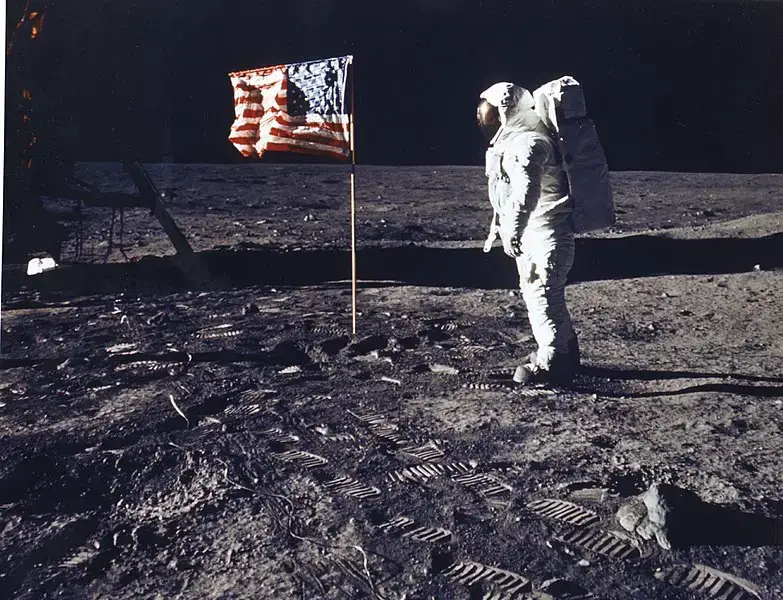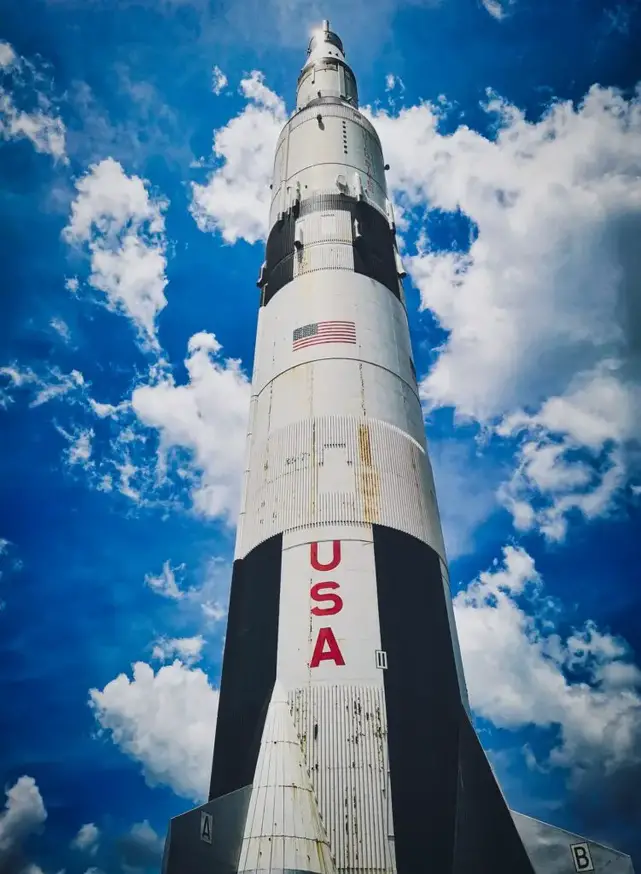On July 20, 1969, at 10:56 p.m. ET, NASA astronaut Neil Armstrong became the first human to step onto the lunar surface, declaring, “That’s one small step for man, one giant leap for mankind.” This historic moment marked a monumental achievement in space exploration.
Shortly after, Buzz Aldrin joined him, becoming the second person to walk on the Moon. But who was Neil Armstrong, what drove him to take this bold step, why did NASA pursue a lunar landing, and what did we learn from this mission? Read on to explore these questions.
Born on August 5, 1930, in Wapakoneta, Ohio, Neil Armstrong’s passion for aviation was evident from a young age. His father, Stephen Koenig Armstrong, nurtured this interest, taking him to the Cleveland Air Races when Neil was two. At age five or six, Armstrong experienced his first flight aboard a Ford Trimotor in Warren, Ohio, sparking a lifelong fascination with flying.
Due to his father’s job as an auditor for the Ohio state government, the family relocated frequently, living in 16 towns over 14 years. In 1944, they settled back in Wapakoneta, where Armstrong attended Blume High School and began flight lessons at the local airfield. He earned his student pilot certificate on his 16th birthday in 1946.
Education and Early Career
Armstrong enrolled at Purdue University in 1947 to study aeronautical engineering, choosing it over MIT due to his passion for flight. In 1949, he was called up by the Navy, becoming a midshipman at Naval Air Station Pensacola. By September 1949, he was training on a North American SNJ, and on March 2, 1950, he completed his first aircraft carrier landing on the USS Cabot, qualifying as a Naval Aviator in August 1950. At 20, he became the youngest officer in an all-jet squadron aboard the USS Essex, earning a promotion in June 1951. He served until August 23, 1952.

In 1955, Armstrong joined the National Advisory Committee for Aeronautics (NACA), completing his first test flight in March and officially joining on July 11. He flew rocket-powered aircraft, including a notable flight on August 15, 1957. When NACA merged into NASA in July 1958, Armstrong transitioned to the new agency as a test pilot.
Joining NASA and Becoming an Astronaut
In April 1962, NASA opened applications for its second group of astronauts for Project Gemini. Armstrong applied in June and was selected in September 1962 as NASA’s first civilian astronaut. In 1965, he and Elliot See served as backup crew for Gemini 5, though the prime crew, Gordon Cooper and Pete Conrad, completed the mission successfully.
Armstrong’s first space mission was as commander of Gemini 8, launched on March 16, 1966. Alongside David Scott, he spent 75 hours in space, completing 55 orbits and successfully docking with an uncrewed Agena vehicle, a significant milestone. Armstrong later served as backup commander for Gemini 11 in 1966 before joining the Apollo program in November 1967.
The Apollo 11 Mission
NASA selected Armstrong, Buzz Aldrin, and Michael Collins for the Apollo 11 mission, launched on July 16, 1969, at 9:32 a.m. EDT from Kennedy Space Center’s Launch Complex 39A aboard the Saturn V rocket. The mission aimed to land humans on the Moon. Armstrong and Aldrin were to descend in the Lunar Module Eagle, while Collins remained in orbit aboard the Columbia Command Module.

As the Eagle approached the lunar surface, Armstrong noticed an unsafe landing site and manually piloted the module to a safer area, narrowly avoiding disaster with only 40 seconds of fuel remaining. The Eagle landed safely at 4:17 p.m. UTC on July 20, 1969, and Armstrong notified Mission Control of the milestone.
The First Step
At 2:56 a.m. UTC on July 21, 1969, Armstrong descended the Eagle’s ladder and stepped onto the Moon, delivering his iconic words. The event, broadcast by Voice of America, BBC, and others, was watched by an estimated 530 million people—about 20% of the global population of 3.6 billion.
Nineteen minutes later, Buzz Aldrin became the second person to walk on the Moon. The duo explored the surface, planted the American flag, spoke with President Richard Nixon, and conducted a two-and-a-half-hour extravehicular activity (EVA). They returned to the Eagle, rendezvoused with Collins in lunar orbit, and safely landed in the Pacific Ocean on July 24, 1969, at 5:54 p.m. UTC.
Legacy and Impact
Neil Armstrong’s historic step cemented his legacy as a pioneer. He passed away on August 25, 2012, but his achievement endures. The Apollo 11 mission demonstrated humanity’s ability to reach and explore another celestial body, paving the way for future missions like NASA’s Artemis program, which aims to return humans to the Moon.
Key Lessons from Apollo 11
The mission confirmed the Moon’s accessibility, advanced space technology, and provided scientific data about the lunar surface. It inspired global interest in space exploration and showcased the power of human ingenuity and determination.
When you think of who was the first man to walk on the Moon, Neil Armstrong’s name stands as a testament to courage and exploration.


